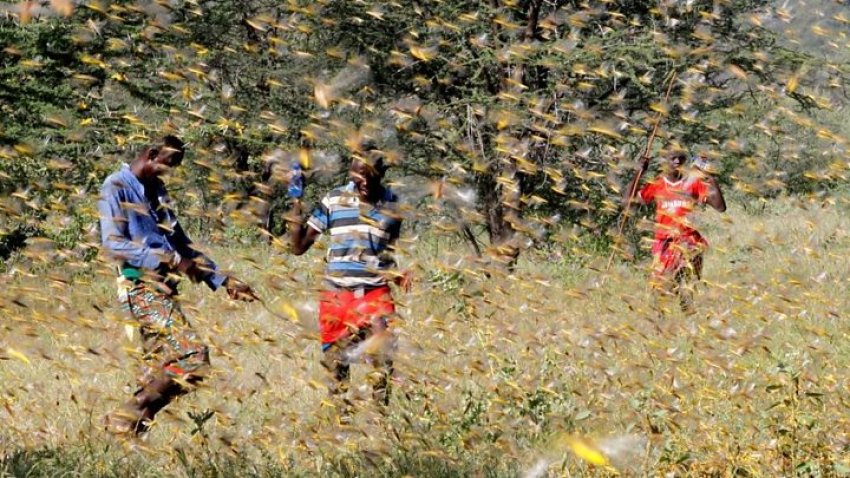
Along with extreme fires, a feature of a rapidly changing climate, Australia is experiencing droughts, floods, and hail and dust storms that have stripped away precious top soil from agricultural land.
While these extreme weather events are driving food prices up here, Australia is not experiencing the level of food insecurity that poor nations are suffering as a result of catastrophic climate change.
For example, the countries of the Horn of Africa and East Africa are experiencing similar events but with very different and disastrous consequences. Like Australia, weather in eastern Africa is being influenced by the Indian Ocean Dipole (IOD), in which sustained changes in the difference between sea surface temperatures of the western and eastern parts of the Indian Ocean drive weather extremes.
East Africa, which includes Somalia, Eritrea, Djibouti and Ethiopia, has been struggling with high food insecurity due to periodic droughts and floods. Last year began in drought, but ended with one of the wettest rainy seasons in four decades, with mass floods killing hundreds of people. By the end of the year there had been eight cyclones — the most since 1976.
Locust swarms
This led to exceptional breeding conditions for some species, in particular locusts. Desert locusts, a large rose-coloured herbivore resembling a grasshopper, thrive in wet and warm weather. They have devastated vegetation which East Africans rely on for food. Some are wondering if Australia will experience something similar.
Desert locusts grow to 6–8 centimetres long and can consume their own body weight in food each day. They can live up to five months, depending on weather and local conditions.
According to the United Nation’s Food and Agriculture Organization (FAO), desert locusts tend to travel in dense swarms that can contain as many as 80 million locusts per square kilometre and can travel up to 150 kilometres a day. A swarm of 1 square kilometre can consume, in a day, the amount of food needed for 35,000 people.
However, most swarms are much larger — up to several hundred square kilometres. One recent swarm in Kenya was 40 kilometres long and 60 kilometres wide. That swarm would of had the capacity to devour the amount of food 82 million people rely on each day. But they not only eat crops, they devour wild and domesticated animals’ food sources.
The worst locust invasion in Africa in 25 years was recorded last July. The swarm emerged in Yemen and moved through Somalia and Ethiopia, destroying 70,000 hectares of farmland. An Ethiopian Airlines jet had to be grounded after its engines were damaged flying through the swarm. The swarm then devastated Kenya in the worst invasion recorded in 70 years.
The FAO has warned that swarms are liable to spread to South Sudan and Uganda, and new swarms are forming in Eritrea, Saudi Arabia, Egypt, Sudan and Yemen.
More than 19 million East Africans are already suffering from acute hunger. The most pressing problem is the locust breeding cycle, which threatens to wipe out newly-planted crops.
There are concerns there will be a 500-fold increase in locust numbers over the next 6 months.
Agribusiness
The United Nations says the only effective way to deal with the scale of the current locust swarms is to spray aerial pesticide and has allocated $10 million to the effort. It estimates at least a further $70 million will be needed.
According to the Desert Locust Control Organization for East Africa, these pesticides are not a threat to humans.
It is difficult to estimate the cost of battling the locust swarms. The FAO reports that a locust invasion between 2003 and 2005 across 20 countries in northern Africa caused more than US$2.5 billion in harvest losses.
In 2012, Africa was “discovered” by corporate agribusinesses that entered into agreements with governments, ostensibly to improve food security and eleviate poverty. African governments facilitated investment opportunities, including tax cuts, reformed land titles to suit agribusinesses and allowed them access to seeds, pesticides and fertilisers.
Sustainable farmer Alan Broughton has noted this led to an increase in land grabs and encouraged monocultural cropping, which has exacerbated soil degradation. With a focus on export crops in place of local food production, food security has gone backwards.
Given the impact of climate change and the scale and spread of the locust swarms, people-powered rather than corporate-driven solutions are urgently needed.